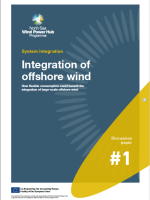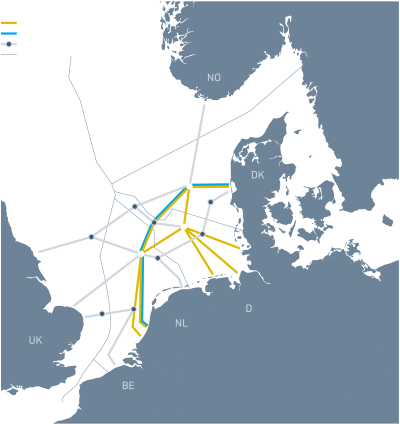A blueprint for the new energy highways
Decades ago, European countries invested in roads and freeways that brought the continent together and allowed people to travel between countries quickly and safely. Since that time, traffic volume has exploded, and capacity is reaching its limits. This is true not just for roads, but in a figurative sense also for the energy infrastructure.
The time has come to build the power highways of the future. And the most important highways will be deep beneath the waves in the North Sea, bringing large amounts of offshore wind energy to shore.
Comprehensive energy system modelling by the North Sea Wind Power Hub consortium has now given us a glimpse of what this future grid could look like. And one thing is clear: just having each country build their own connections from sea to land is not the way to do it.
The challenge
Producing more wind energy at sea is a must, but so is bringing all the new energy to where it is needed. An obvious solution would be for each country to bring the energy from their own wind farms and energy hubs to shore for the national market, but is that really the best solution?
The map on this page shows some important features of this future grid. Most visible is a high-capacity connection between Dutch, German and Danish sites of minimum 2 GW and up to 6 GW. This allows the massive amounts of energy from the future Danish energy island to reach the Netherlands and Germany.
Multiple electricity corridors in the North Sea can be identified. They follow a North-South or East-West direction as they connect offshore wind locations, with potential branches to surrounding countries. This is the model called hub-and-spoke. These results of the modelling are consistent for the period 2030 to 2050.
Connecting wind farms and distributing power isnot sufficient to achieve integration of the northern European energy systems. Hydrogen connections are also an essential part of the future energy highways. Electrolysers that convert power to gas, in combination with imported hydrogen, will provide a constant stream of energy for sectors of the economy that can’t run on electricity. And converting power to gas or gas to power can balance the electricity network in times of high or low production.
The insight
A coordinated roll-out with multiple energy connections between North Sea countries is much more efficient than just connecting every new wind farm to its home country by default. Now we even have a first blueprint for how best to do it. Through a combination of electricity and hydrogen corridors in the North Sea, we can show a pathway towards reaching the ambitious goals.
Interestingly, this way of looking at the problem not only shows where to build the connections, but also the best sites for the new offshore wind farms. With the right approach, the roll-out can be made approximately 5% more cost efficient. That amounts to billions of euros saved.
These energy highways will transport solar, hydro or wind power. Some will even carry hydrogen, as power-to-X will play a leading role in the build-out and be key to the decarbonization of large industries.
More information


